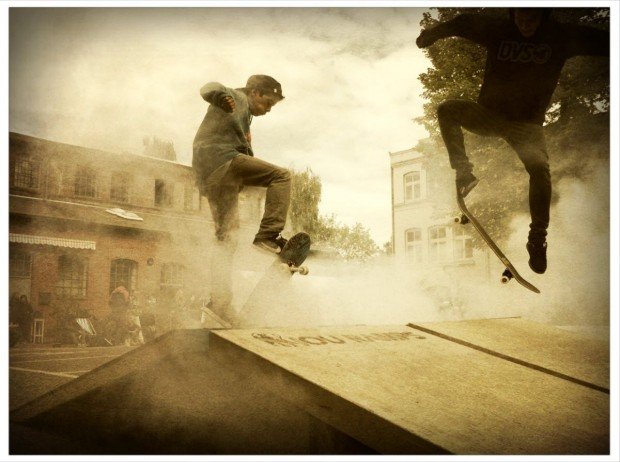Ongoing Innovation in Skateboard Design
According to Statista, there are over 8 million skateboarders in the US alone. But to people who aren’t professional skateboarders or those who don’t have a degree in skateboard engineering and design, every board looks much the same. All boards have four wheels, two trucks, and a deck. However, it’s not that straightforward.

Skateboards have a long and varied history, and board design has changed dramatically over the years. The future of the skateboard remains unknown, but what is certain is that the boards we have today went through quite the transformation to get to this point.
The First-Ever Skateboards
Skateboards first appeared in America back in the 1940s, and it’s fair to say that the design of the oldest boards is a far cry from what we have today. The boards from the 1940s have been described by some as a “3-wheeled metal rocket ships that kids used to use to bomb down the longest of hills.” These boards were often homemade from materials such as milk crates, roller skate wheels, and simple nuts and bolts. The first mass-produced skateboards were distributed by the 1959 Roller Derby Skate Company.
Kicktail Boards
In 1969, Larry Stephens changed the world of skateboarding forever when he invented the kicktail board. Couple these boards with the polyurethane wheels developed by Frank Natsworthy, and you have a skateboard that’s far more like the boards we have today. The kicktail design of the board provided all skaters in the 1970s with the maneuverability that they required. Since the invention of the kicktail, there have been some minor shape changes to the engineering of the skateboard. 1989 proves the most important as it was this year that the shape change to the boards we now know, and love, occurred.
The Rise Of Titanium
In more recent years, skateboards resemble fish with neon designs and graffiti-inspired art decorating the bottom of the deck. But the most important development in the design of the modern skateboard is undoubtedly the addition of titanium bearings used for the wheels and the trucks. These made riding around on skateboards far more reliable, safe, and best of all, smooth. According to professionals at TMSTitanium.com, titanium is one of the most durable metals available today, which is why all professional skateboarders now ensure that their boards are designed using titanium bearings to achieve the best results during competitions.
The Big Question
Many skateboarders fear the future and all transportation and road devices becoming autonomous and self-driving. Are electric skateboards going to dominate the future, or will the authenticity of the modern boards of today persevere and endure into the next generation? Answering that question is impossible because the evolution and future of the skateboard cannot be predicted.
Where To Next?
There are, however, many people putting their engineering skills to good use to ensure that tomorrow’s skateboards combine traditional skating with cutting-edge design. Researchers in
Germany has recently built and equipped a skateboard with state-of-the-art movement and aerodynamic technologies. They call it the most advanced skateboard in history and it highlights just how exciting the future of skateboard innovation could be.
